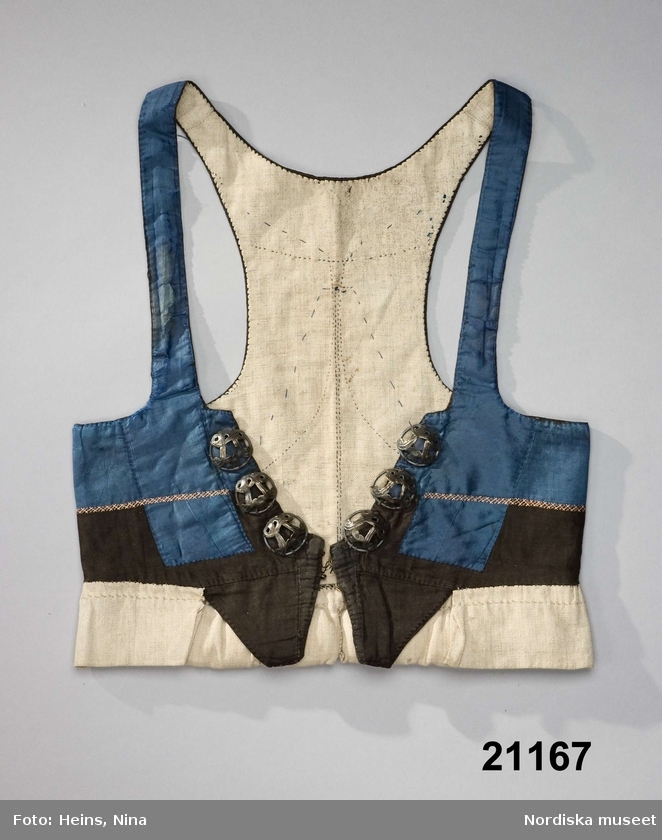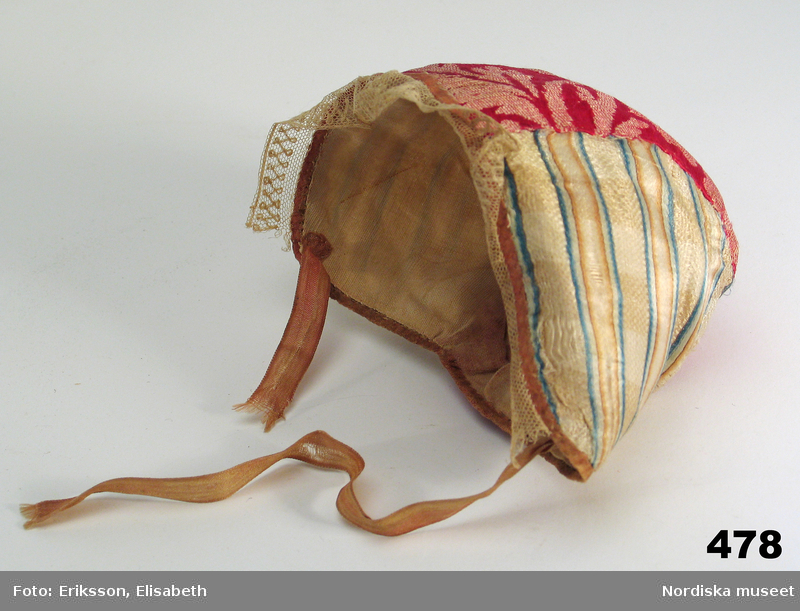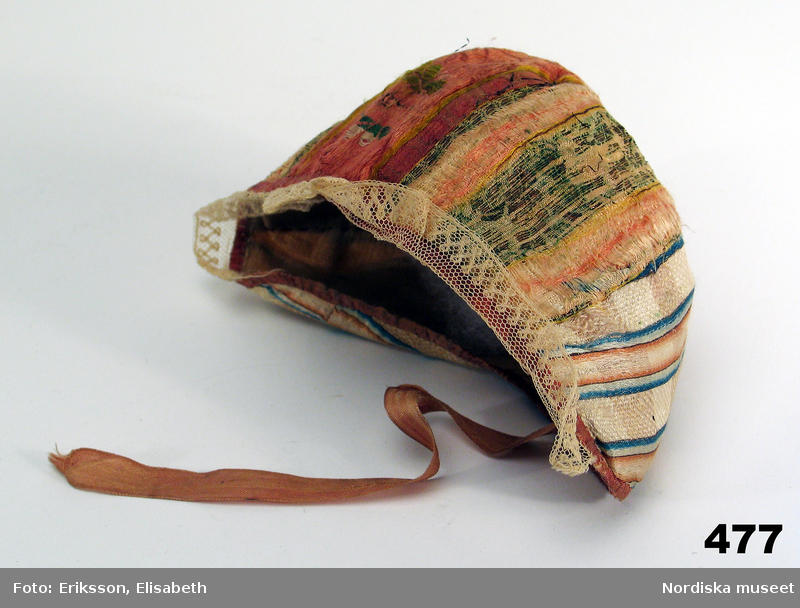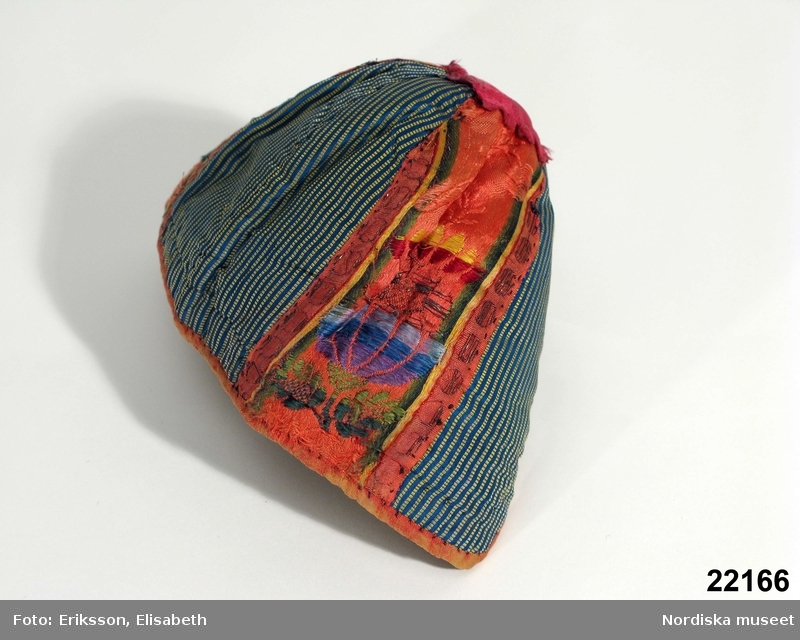Back in April I attended an event held at the
open air museum of Fredriksdal. It focused on Swedish civilians and soldiers ca
1800-10. We got to live in the houses, cook in the fireplaces, even sleep in
the beds. I didn’t do the latter, as the weather was cold and windy, I’m having a bit of a tough pregnancy, and
to top it off, had just had pneumonia. I thought it safer to sleep in my own
warm bed, and just stayed the one day, but still had a good time. The event,
which was rather small and intimate, still attracted participants from the
whole country, and even a few from Norway. Fredriksdal is located in the county of Skåne
(Scania) and most of the houses are from there, so those women in attendance who, like me, are from this part of the
country, chose to dress according to the local fashion, which in this case
meant folk costumes, still in daily use at the time. Our feast day clothes
wouldn’t do, so we tried to tone it down for an everyday look. Trickier than
you might think, as very little evidence remains as to what was worn then. When
it comes to the fancy clothes, much is known, but as usual, no one really cared to
document what people wore when working in the kitchen garden.
I made a brown wool skirt for the occasion,
which I intend to also use as a petticoat for my fancy folk costume. Brown wool
skirts from my parish are mentioned in estate inventories, but are far from as common as the usual
blue and green, or the reasonably common black. I had a suitable fulled, twill woven
wool at home though, so it had to do, even if it was brown.
It is constructed from straight panels. My fabric
was 150 cm wide, but as the extant skirts I know of are usually made from
narrower widths I cut my panels in half, and stitched them back up again,
making four narrow ones in total, and a width of close to 3 metres. The hem was
faced with a strip of unbleached linen.
The skirt is smooth in front, as seen in extant skirts, and has the fullness taken in by stroked gathers at the sides and back, that are secured with rows of stitches, seen only from the inside.
It closes by a sturdy brass hook and eye half way to the left side.
I don’t know how they did about pockets – in some
mid-19th century folk costume skirts there are stitched in pockets, like in modern
skirts of the time, but for earlier decades I’m unsure if they wore loose pockets
or not. I left a slit open in the right side seam anyway, so if need be I can
tie a pocket round my waist.
In the end the brown skirt ended up used as a
petticoat at the event, as I decided I wanted two skirts for warmth, and wore
my usual blue skirt on top. In the period manner I flipped the blue skirt up over my shoulders to keep out the wind every now and then, so I didn't make the brown one in vain.
I also made a new bodice. I intend for
it to be trimmed with blue silk ribbons, and replace my old fancy silk bodice as
that one has become rather too small. For the event I used it untrimmed though.
It’s made from fine brushed wool, lined with unbleached linen, and closes in front with three pairs of brass
hooks and eyes, but most of the closure is hidden beneath the skirt. The wide opening would
be held by buckles and a chain for best, but for everyday was likely left as
was.
At the bottom of the bodice a rather thick, padded linen roll is stitched, on
which the skirts rest. Having a full figure was considered attractive by the
country folk at this time and place, and you do feel rather important in an "I break for nobody" kind of way when you
come walking along the road in all your matronly fullness, especially when you wear several wool skirts on top of each other. It's far from what is considered an attractive figure today, which make rather few people recreate it as close to the originals as I try to, but go the more 'inspired' route. I'll post more detailed pictures of the bodice when it's trimmed and have the buckles attached.
As for the apron, I didn’t want to use my
fancy one, as I expected to cook and do greasy dishes – a good decision it
turned out. Instead I whipped one up from a piece of cotton fabric that I had
intended to purge from stash. It’s not perfectly period, the fabric isn't quite right and it's much too narrow, but woven stripes were
popular, and the fabric had a sort of washed out, sun bleached, worn look to it that
I thought would do for everyday.
I never got any decent pictures of myself from
the actual event (though I can be seen in a couple of these), so I took proper pictures the other day. The weather is a lot warmer now
than in April, so I could ditch the knitted spedetröja I had to wear to the event, despite it feeling too fancy. For the pictures I wore the bodice and skirt over
just an unbleached linen shift (for an everyday shift I’m not sure if it should have a collar
or not...), and accessorised it with the ever present apron and head kerchief. As the temperature is pleasant I went without stockings or any form of shoes. I want a pair of
wooden clogs, but all in good time.
The outfit might have been a little later than
the event called for, as most of the sources I base it off are from Ca 1825-50,
and I generally aim for the 1830’s-40’s in my fancy version of the folk costume,
but ah well. I’m still not quite sure how historically accurate this outfit is,
but at the very least I think it's plausible and believable. I may have to revise it in
future, but then we always do, don’t we?
Sources:
My Pinterest board of extant clothing and period images from the area. Mostly fancy versions.
Allmogedräkten i Oxie härad, (1978) by Helge Andersson.
Sources:
My Pinterest board of extant clothing and period images from the area. Mostly fancy versions.
Allmogedräkten i Oxie härad, (1978) by Helge Andersson.



















.%2BNationalmuseum%2C%2Bnr.%2BNMH%2B2311906.jpg)






























